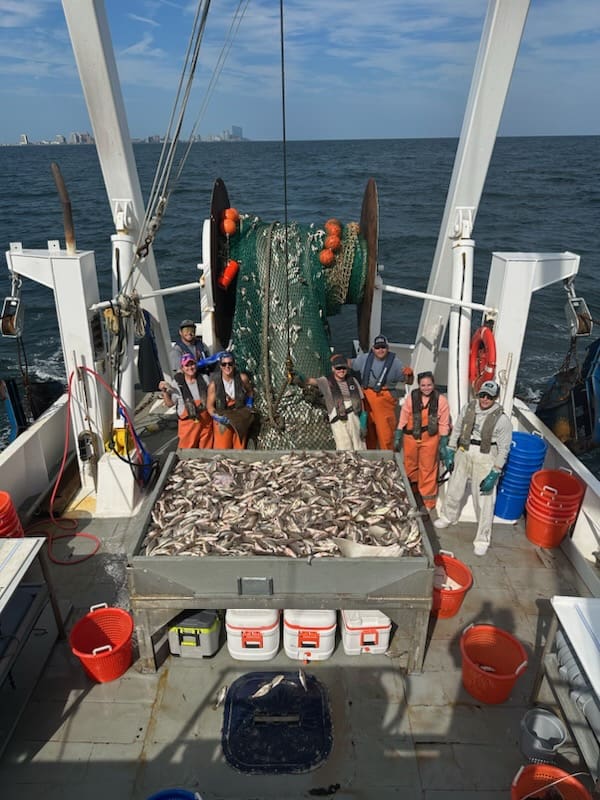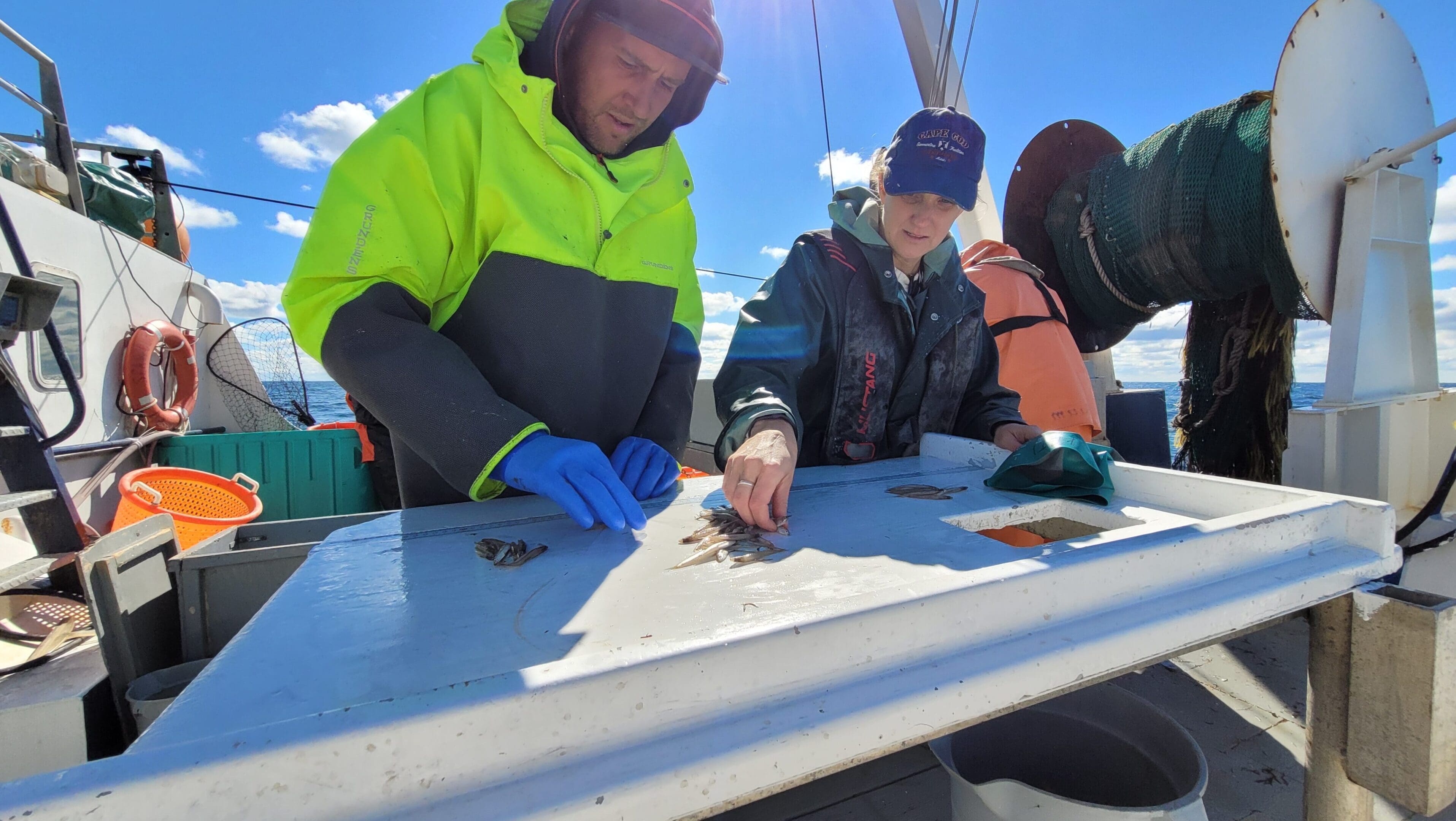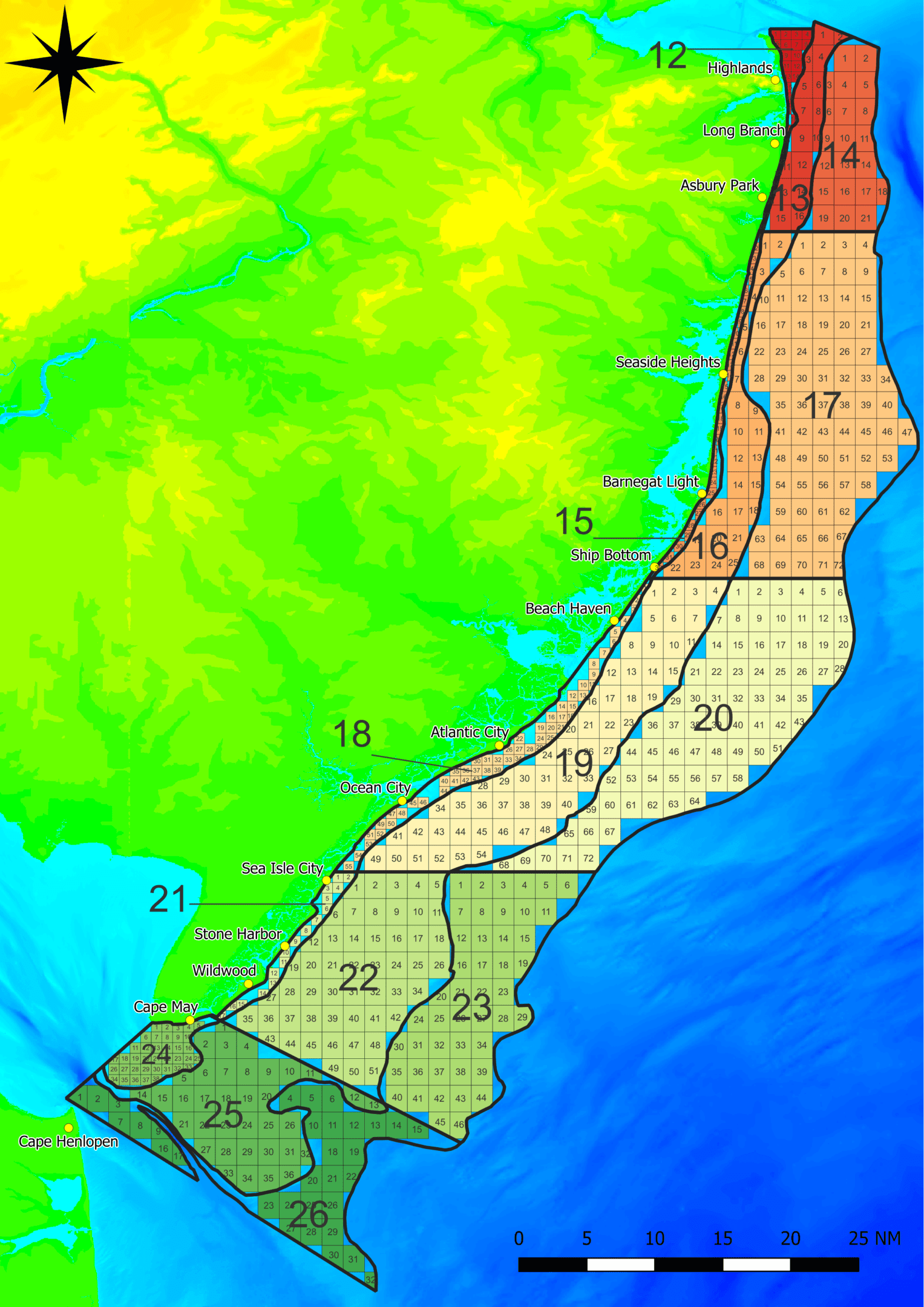Sorting
Samples are emptied onto a large sorting table where the science crew separates the sample by species, by size if multiple size classes are apparent or if there is a great range in sizes for a particular species, and occasionally by gender. Samples small in size or individuals are sorted into small plastic buckets while larger samples are sorted into large plastic baskets. In rare cases when an individual will not fit into a plastic basket (i.e. large sharks, rays, etc.), the individual may be moved to a large plastic tote or have to be lifted by the vessel’s crane. Sorting priority is given to very large individuals and endangered or threatened species in the interest of decreasing and avoiding any survey-related mortality.
Occasionally samples containing multiple species of very small size-classes will be processed as a mixed sample, subsampled, then sorted as these cases can be extensively time-consuming to sort in their entirety.
Biometrics
Once sorting is complete, samples are weighed on a Marel model M2200 marine deck scale (Document 6). Excessive water and debris should be removed from the scale between measurements and samples should be placed in the center of the scale to maintain consistency. Wind may affect the accuracy of the scale and can be mediated by using a wood wind screen box. Individuals too large for the deck scale are weighed on a Dynafor load-indicator suspended from the vessel’s crane (Document 7). Straps or ropes are often used to lift such samples and their weight must be deducted from the total measured weight.
Subsamples are retained from very large samples while the remainder is discarded overboard after being weighed. This is typically accomplished by first splitting full baskets into two half-full baskets. Each basket is then briefly stirred, a small sample removed and contributed to a subsample, and the remainder recombined to be contributed to the portion of the sample to be discarded. A subsample of thirty individuals is a minimum goal for each subsample, but subsamples larger than thirty occur frequently and are often due to wider size-distributions of individuals.
Subsamples of larger species or those not easy to divide evenly (i.e. dogfish, skates, etc.) are subsampled by setting aside an appropriate number of full baskets depending on the size and number of the individuals. In rare instances, there may be too many of a species to be reasonably sorted into baskets (i.e. dogfish, skates, etc.). In these cases an appropriate number of bushels will be filled, weighed, and measured (as in previous subsampling procedures), but the majority will be counted individually as they are discarded overboard.
Two measuring stations operate simultaneously, measuring samples and subsamples typically to the nearest centimeter. Species-specific biometric protocols exist depending on the nature of the organism (Figure 2). Samples are measured using plastic meter sticks that can be replaced as markings wear. Individuals larger than the measuring tables are measured with a tape-measure. Processing priority is given to larger, hardier species to decrease survey-related mortality.
Data recording
All biometric data is recorded on Juniper Systems’ Allegro 2 ruggedized handheld computers (Document 8) and entered in Data Trawler, a custom data-entry program (Document 9). A data-entry individual with a computer is present at each of two measuring stations.
Sample collection
Samples may be set aside for further processing as biometrics are obtained or afterwards. Sampling protocols vary from species to species and from survey to survey (Figure 3).




